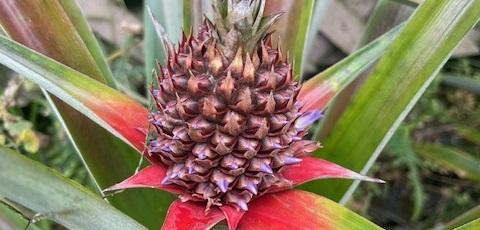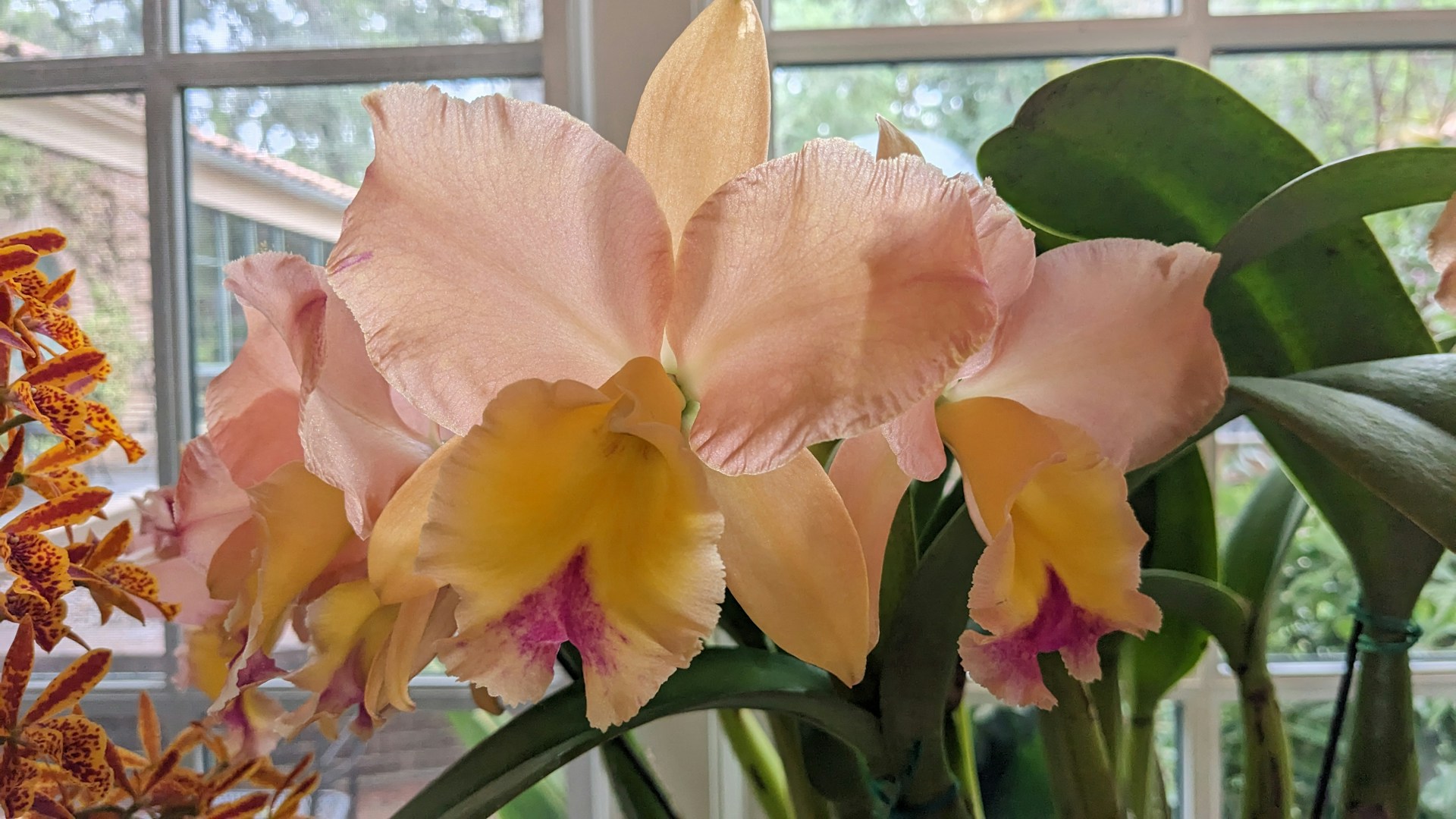Have you ever thought about how pineapples grow? I’m guessing since you’re reading a nerdy botany blog, you might have. But so many people I talk with are shocked to learn that pineapples don’t grow on trees. I’ve even had people argue with me about it & only believe me when I show them pictures of my pineapple plants. Let’s clear up a common misconception, Pineapples aren’t tree dwellers; they’re actually bromeliads, a family of tropical plants including air plants, quill plants, and many tropical rosette plants. While they may not resemble your typical fruit-bearing tree, pineapple plants are really beautiful. Their spiky leaves and exotic charm make them an interesting addition to any garden or indoor space. When they begin to bloom, the flower rosette is fun to watch grow and the actual flowers are a bit surprising.
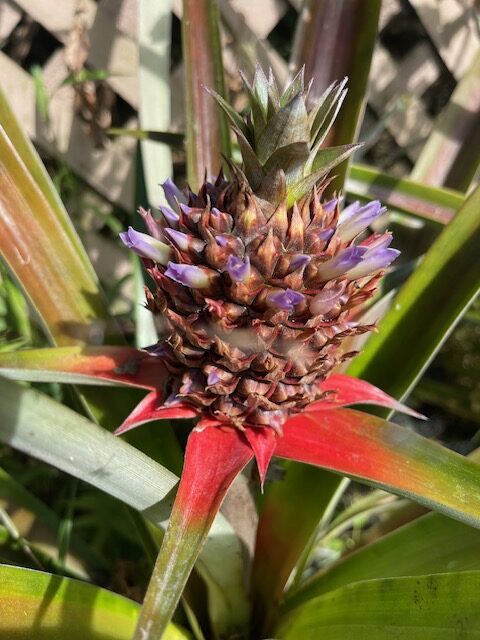
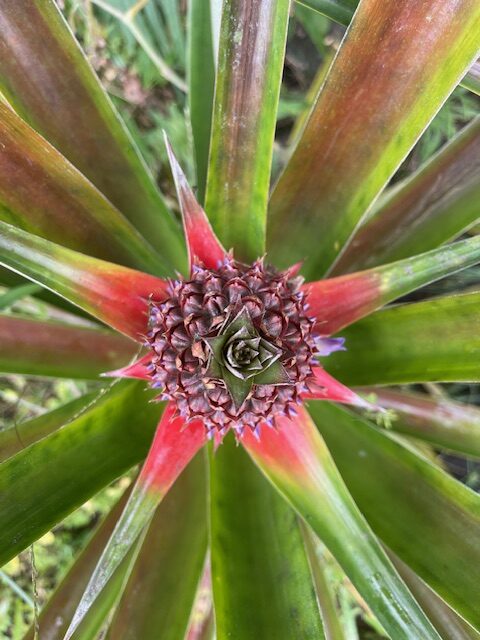
When we moved to Hilo, the house we rented had a little pineapple patch, already with a few small pineapples about 8 inches tall. I was excited to watch them grow & hopefully eventually get to eat a couple of homegrown pineapples. This was my first experience growing pineapples and I had no idea how to tell when they were ripe. I didn’t realize they needed staking to keep them from falling over when the pineapples get big. But despite my lack of experience, we ended up enjoying a few perfectly ripe, delicious pineapples, and I knew I needed to have a pineapple patch at my next house.
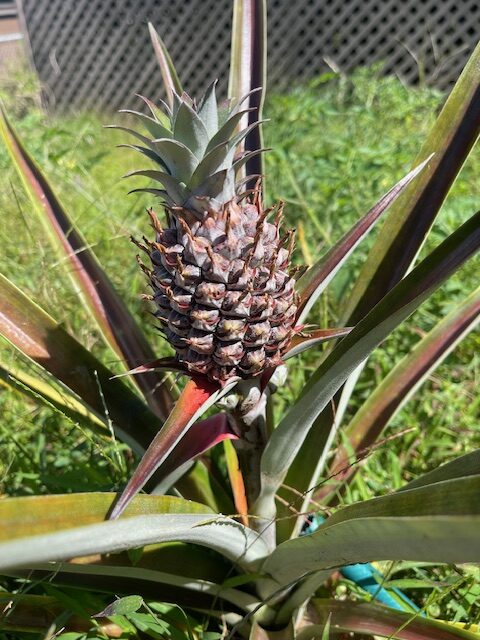
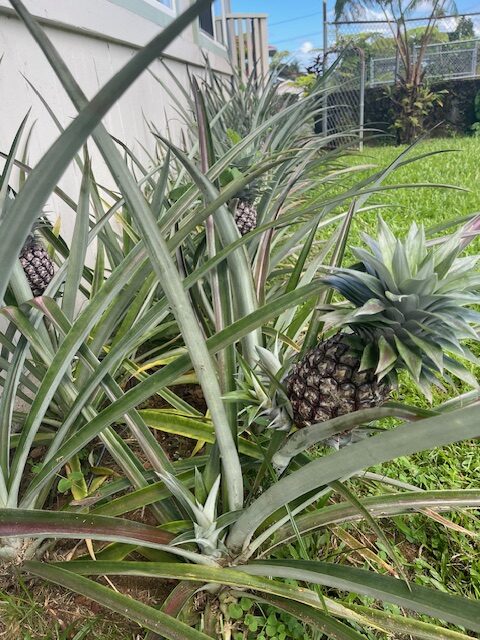
Rooting for Success: Propagating Pineapples from Crowns
Here’s a fun experiment you can try at home- no matter where you live. Take the crown (top) of a ripe pineapple, peel off a few of the outermost leaves, pop it in a glass of water, and voila! Watch as it sprouts roots, ready to become a whole new pineapple plant. This method of propagation is not only fun to watch, but also a great way to expand your pineapple plant collection. I save and root all my pineapple tops. Once they have a good root system, I either plant them in my pineapple patch or plant them into 6-inch plastic pots and give them as gifts.
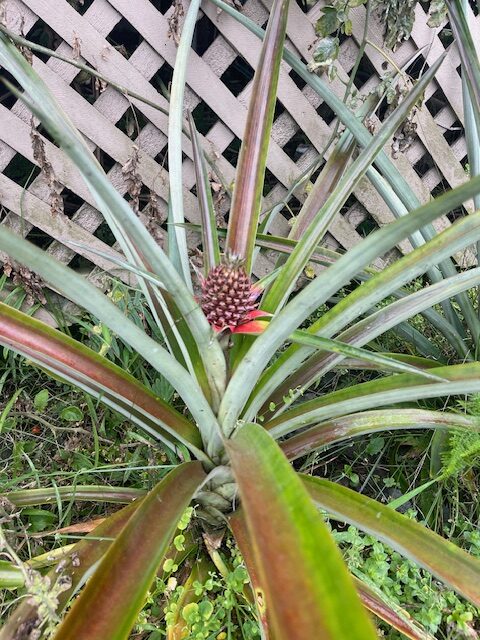

Growing Conditions: The Pineapple’s Perfect Environment
But not everyone can produce pineapples. Pineapples thrive in warm, sunny climates with well-drained soil. They generally grow well and produce fruits only in USDA hardiness zones 10 and 11, which means the only state where they can grow and produce well is Hawaii. That doesn’t mean you can’t grow a pineapple plant in other hardiness zones, it just means you’ll want to grow them in pots and move them inside during colder weather. It also means the chances of producing fruit are pretty low in the continental US.
Pineapples prefer a soil pH between 5.0 and 6.0 (slightly acidic) and benefit from occasional fertilization with a balanced fertilizer. Adequate water and sunlight are essential for healthy growth, so make sure your pineapple plants get plenty of water and are in full sun. While pineapples need plenty of water, they also need well-draining soil, because they are somewhat susceptible to root rot and fungal diseases. So deep watering without waterlogging the plants is important.
Patience is a Virtue: Time to Flower and Ripeness
As with any fruit-bearing plant, pineapples require patience, but even more so with pineapples. It takes approximately 18 to 24 months for a pineapple plant to reach maturity and start flowering. Once the fruit appears, it takes an additional 6 to 8 months to ripen fully. It takes patience to watch those baby pineapples grow for months! But they are worth the wait, as fresh, ripe pineapples are better than anything you’ve ever bought at the store!
Ensuring Pineapple Plant Stability
As pineapples grow and fruit, they can get quite heavy. That’s when they might need a little support. Staking or propping up the fruit-bearing stem can prevent it from bending or breaking under the weight of the pineapples. In the pineapple patch we had in Hilo, the plants were so close together that they partially supported each other, but even then, as the pineapples got really big, they started to fall over. Staking will keep that from happening and it will help keep the stems from breaking, a broken stem is terrible as it means the fruit can’t continue to get nutrients from the plant and ripen.


How to Tell When Your Pineapple is Perfect
Now, let’s talk ripeness. How do you know when your pineapple is perfectly ripe and ready to eat? Back when we had the pineapple patch in Hilo, I had no idea how to tell when they were ripe & I sacrificed one because it was about the size of a typical ripe pineapple and it looked like a typical ripe pineapple. But sadly it had no flavor. I was so sad to have wasted an entire pineapple! As time has gone on, I’ve realized that smell is probably the best indicator of ripeness- when a pineapple smells like a pineapple, it will probably taste like a pineapple too (nothing like stating the obvious, right?). Another indicator is to gently tug at the leaves near the crown, if they come off easily, that’s a good sign the pineapple is ripe. Determining the perfect ripeness definitely takes some practice, and of course, pineapples taste best at the perfect ripeness level.
Exploring Pineapple Varieties
More than three dozen different types of pineapples are grown around the world, each with its own unique size, flavor, and appearance. The most popular include:
Abacaxi
Tall and spiny with exceptionally sweet, virtually translucent flesh. Sadly, they are very delicate and hard to ship far distances.
Brecheche
These small, olive-tinted, cylinder-shaped fruit are one of the few pineapples that is completely spike-free.
Kona Sugarloaf
A cousin of the Smooth Cayenne, Kona Sugarloafs (also known as white pineapples) are beloved for their lack of acidity, high sugar content, and completely edible core. These are commonly grown in Hawaii, but they don’t ship well, so they’re not seen in mainland markets. I grow mostly Kona sugarloaf pineapples.
Pernambuco
Brazil’s favorite pineapple, the Pernambuco has a mild delicate flavor and sports pale yellowish-white flesh and long, distinctive spiny leaves.
Queen
Most commonly sold in Australia and South Africa, these cold-tolerant fruits are typically dark yellow with a very fine, dense core.
Red Spanish
A Caribbean staple, these sturdy, highly aromatic fruits get their name from their unusual orangish-red skin.
Singapore Red
Outside, these small fruits have a unique reddish color (including a red stripe on the tips of their leaves). Inside, they are golden-yellow with crisp, tangy flesh that makes them ideal for canning.
Smooth Cayenne
The type of pineapple we see most often in U.S. markets, Smooth Cayennes tend to be larger and juicier than other pineapple and are often imported from Hawaii. The patented Dole Tropical Gold variety is a cultivar of smooth cayenne.
So, there you have it – the not-so-secret life of growing pineapples. It’s a rewarding journey filled with tropical vibes and tasty rewards. Even if you don’t live in a tropical climate, have fun growing pineapple plants from grocery store pineapple crowns. Who knew that a simple fruit could bring so much joy, wonder, and beauty?
Happy Growing!

